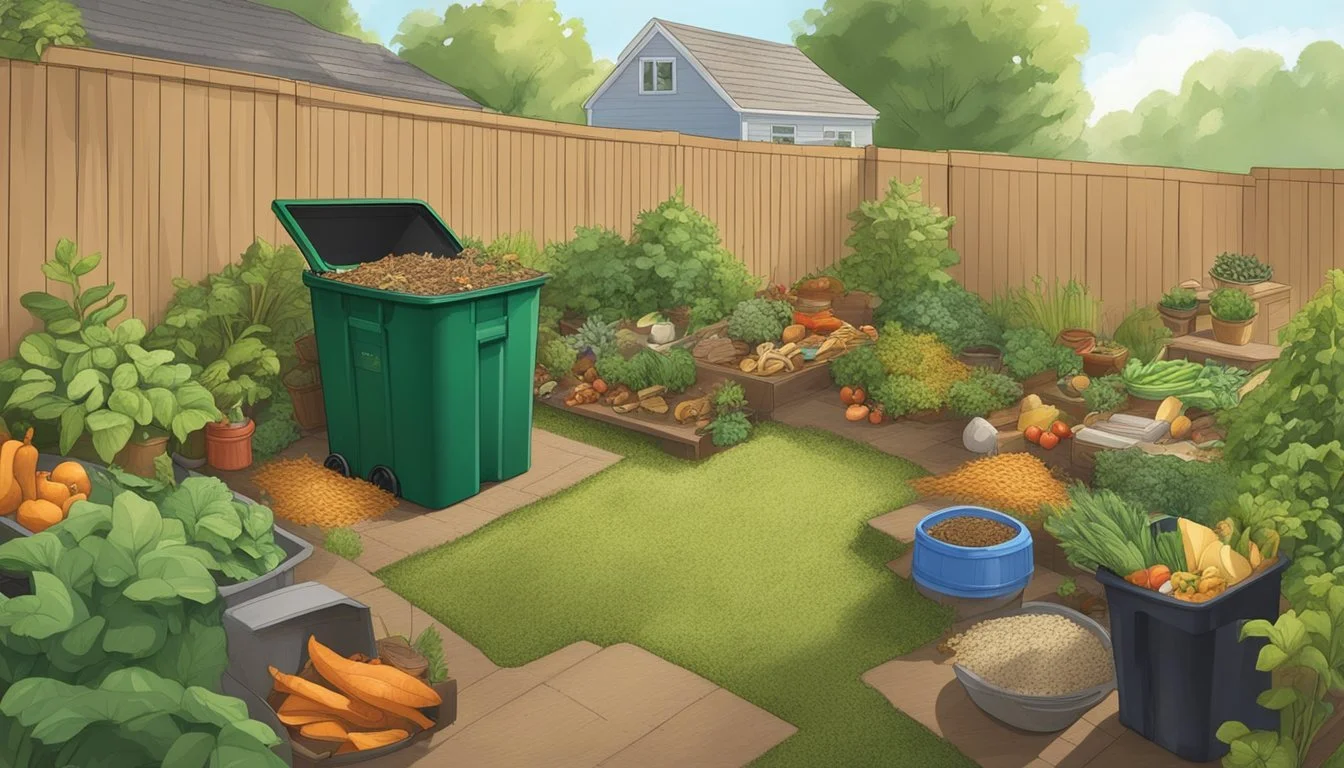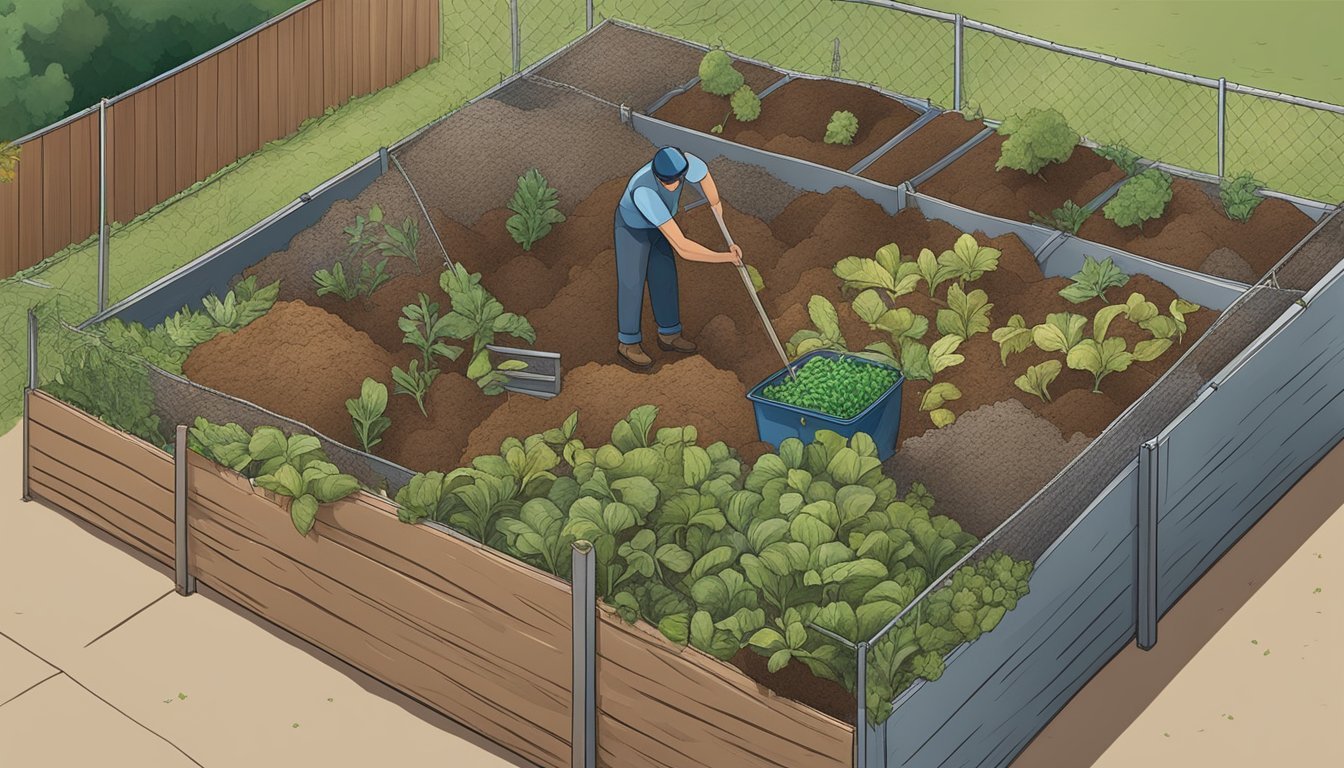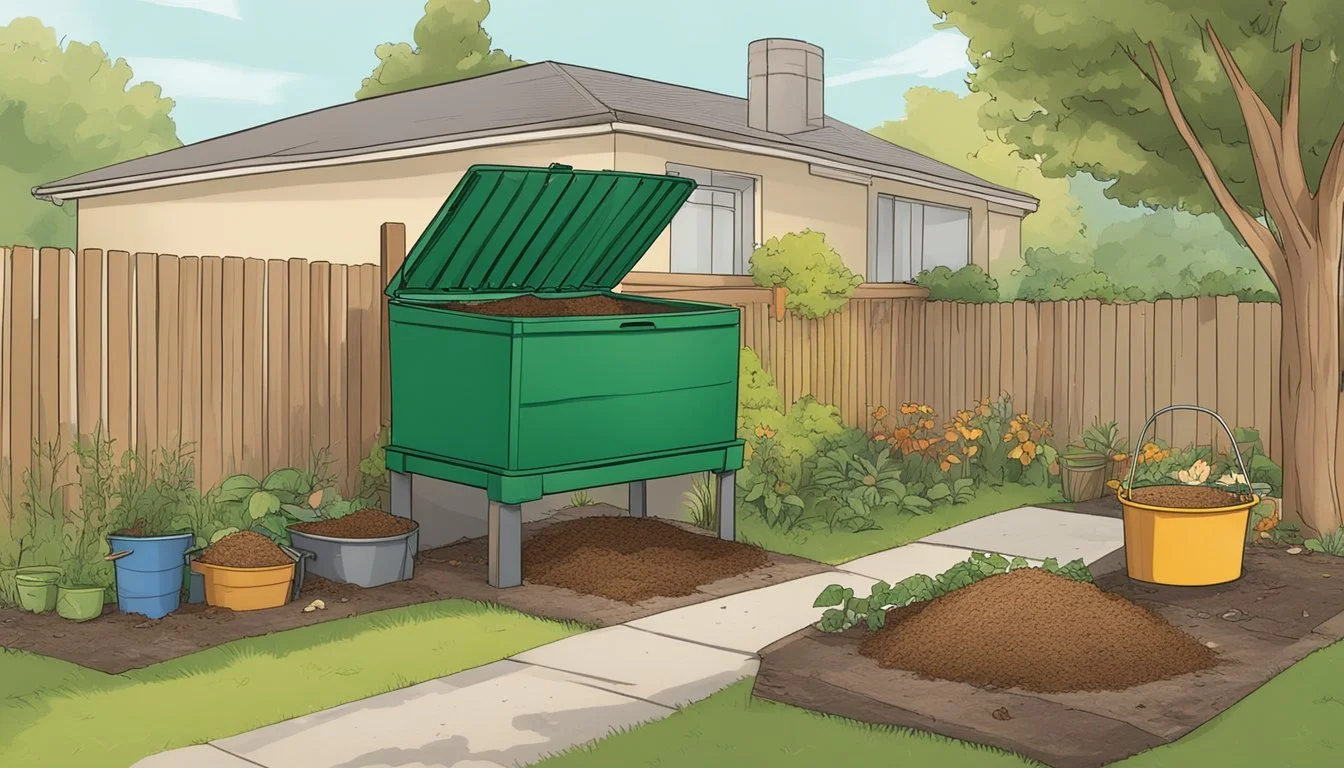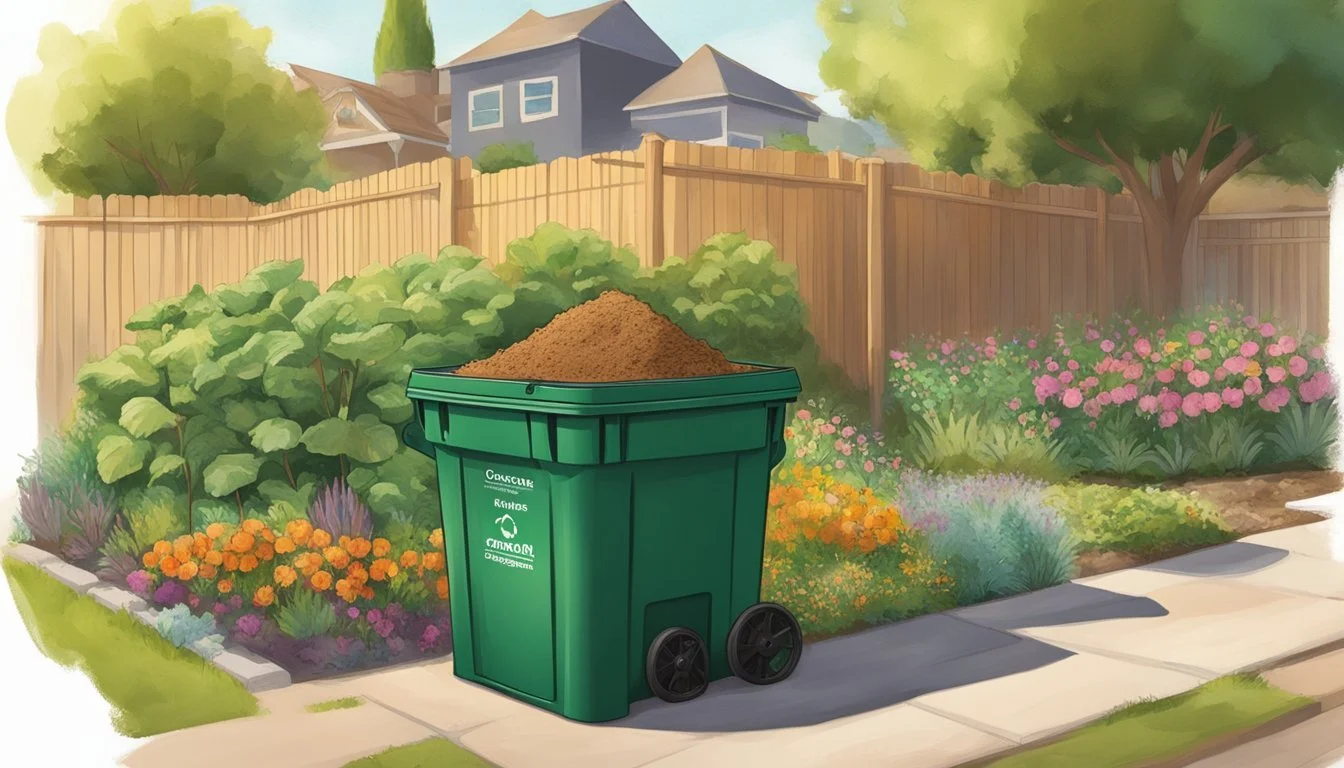Guide to Composting in El Monte, CA
Essential Tips for Eco-Friendly Waste Management
Composting is a vital aspect of sustainable living that turns kitchen scraps and yard waste into valuable, nutrient-rich soil amendment. El Monte residents have embraced this eco-friendly practice, recognizing its importance in waste reduction and its benefit to garden health. The process involves the breakdown of organic materials, such as leaves, twigs, and food scraps, which, over time, decay into humus, the life-giving component of the soil.
In El Monte, initiatives such as the Smart Gardening program provide community members with the information needed to start composting at home effectively. Workshops on composting offer insights into backyard and worm composting methods, grasscycling, and natural pest management, equipping residents with a comprehensive understanding of the ecosystem in their gardens. Additionally, the implementation of SB 1383 highlights the city's commitment to organic waste recycling, emphasizing the importance of composting on a wider scale.
Compost benefits range from improving soil structure and moisture retention to reducing the need for chemical fertilizers. By providing these educational resources, El Monte ensures its citizens are well-informed and capable of contributing to a healthier environment. As a result, the city not only moves towards a more sustainable future but also cultivates a community that values and contributes to the preservation of the local ecosystem.
Basics of Composting
In El Monte, CA, composting is an effective method for transforming organic material into a useful soil amendment. This process not only enriches the garden soil but is also an environmentally-friendly way to reduce waste.
What is Composting?
Composting is the natural process of recycling decomposed organic materials into a nutrient-rich soil conditioner. Organic matter such as leaves, shredded twigs, and kitchen scraps like fruit and vegetable peelings are combined and managed to encourage the break down by microorganisms in the presence of oxygen. The end product is humus, a dark, crumbly material beneficial for enriching garden soil.
Benefits of Composting
Soil Health: Compost improves soil structure, providing better drainage and increased water retention in sandy soils while enhancing moisture and nutrients available to plants.
Plant Growth: The nutrients in compost are released slowly, providing consistent nourishment to the plants and thus promoting healthy and robust growth.
Waste Reduction: By composting, El Monte residents can divert a significant amount of their household organic waste from landfills, helping to minimize the overall environmental impact.
Cost-effective: Creating compost at home reduces the need for chemical fertilizers, saving gardeners money while providing an all-natural soil amendment.
Using these straightforward composting principles, individuals in El Monte can contribute to a greener environment and enjoy the many benefits compost has to offer.
Setting Up Your Compost Pile
In El Monte, CA, establishing a compost pile requires attention to detail and a strategic approach. Proper site selection, choosing the right type of bin, and balancing the compost ingredients are crucial steps for effective composting.
Choosing the Right Location
A compost pile should be positioned in a convenient yet discreet part of the garden. The chosen location must be flat and well-drained to prevent waterlogging. It should also be accessible for adding materials and be close to a water source for easy maintenance. Partial shade is ideal to keep the pile from getting too hot, yet with some sun exposure to help materials break down.
Compost Bin Options
Composting bins come in various forms, from simple open bins to closed tumblers. In El Monte's climate, closed bins can help retain moisture and prevent pests. Homeowners can choose stationary bins, which are great for larger gardens, or rotating bins, which make the task of turning organic materials easier and more efficient.
Ingredients for your Compost
The balance of carbon (browns) and nitrogen (greens) is fundamental in composting. Browns include dry leaves, straw, or paper, while greens are made up of kitchen scraps and fresh yard waste. A good rule of thumb is to aim for a ratio of about 3 parts browns to 1 part greens by volume. Regularly turning the pile encourages aeration and speeds up the composting process.
Composting Methods
Composting is an efficient process to recycle organic waste into valuable soil amendments. Depending on one's resources and needs, there are various methods available, each with its distinct approach and benefits.
Traditional Backyard Composting
In Traditional Backyard Composting, individuals convert yard debris and kitchen vegetable scraps into compost in their own backyards. This method involves creating a compost pile where organic materials decompose over time. One can employ a slow composting approach where materials are added continuously, and the pile is turned and watered as desired. The resulting compost is usually ready within 12 to 18 months. Alternatively, an intermediate approach involves chopping materials into 2-inch pieces and turning the pile weekly, yielding compost in 3 to 8 months.
Vermicomposting
Vermicomposting, or worm composting, uses redworms to process food waste into compost. This method is suitable for indoors and small spaces. In a bin filled with bedding material and food scraps, the redworms consume the waste, producing nutrient-rich castings which are an excellent amendment for soil. Vermicomposting is faster than traditional methods, with worm castings being produced in a matter of months.
Community Composting
For individuals without the space or resources to compost at home, Community Composting is an excellent alternative. Participants in community programs collect their organic waste and contribute it to a larger, communal compost system. This method not only diverts waste from landfills but also fosters a sense of shared responsibility and community involvement. It is a collective effort which can handle larger volumes of waste and produce significant amounts of compost for community gardens and landscaping projects.
Maintaining Your Compost
Maintaining a compost pile requires careful management of certain elements to transform waste into nutrient-rich soil. Each component from moisture level to the size of the compost pile contributes to the efficacy of the composting process.
Balancing Greens and Browns
A balance of nitrogen-rich 'greens' and carbon-rich 'browns' is crucial for effective composting. Greens include kitchen scraps and lawn clippings, which provide nitrogen, while browns like leaves and paper add carbon. A healthy compost pile should have a carbon to nitrogen ratio of about 30:1. To maintain this balance, "green" materials should be alternated with "brown" ones in layers.
Aeration and Moisture Control
Oxygen is essential for composting as it supports the organisms that break down the pile. Regularly turning the compost introduces oxygen and helps prevent unpleasant odors. The compost should have the consistency of a damp sponge; too much moisture can create anaerobic conditions and too little can slow down the decomposition process. If needed, add water when dry or dry materials when wet to adjust the moisture level.
Temperature and Size Monitoring
The size of the compost pile affects its ability to retain heat, with a volume of at least one cubic yard being ideal to maintain the necessary temperature for decomposition. A well-maintained pile will generally reach temperatures between 135°F and 160°F, which can be monitored with a compost thermometer. A pile that is too small may not heat up effectively, while one that is too large may be difficult to turn.
By keeping a watchful eye on these elements and making adjustments as needed, El Monte residents can ensure their compost becomes a valuable addition to their gardening efforts.
Troubleshooting Common Issues
When engaging in composting in El Monte, CA, encountering issues such as odors, pests, and slow decomposition is common. Proper troubleshooting can quickly address these challenges and maintain a healthy compost system.
Managing Odors
Compost should have an earthy smell; a strong odor indicates an imbalance. Odor issues often stem from excessive moisture or an incorrect balance between green (nitrogen-rich) and brown (carbon-rich) materials. To counteract foul smells:
Increase airflow: Turn the compost pile to introduce oxygen which aids in reducing odors.
Adjust ratios: Add more brown materials like dry leaves or cardboard to soak up excess moisture.
Pest Deterrence
Pests are attracted to open compost bins due to the presence of food scraps. To keep pests at bay:
Secure the bin: Ensure your compost bin has a tight-fitting lid.
Bury food scraps: Always cover fresh kitchen waste with a layer of browns to mask the scent from pests like rodents or flies.
Decomposition Acceleration
For a faster breakdown of organic material in El Monte's climate:
Maintain moisture: The compost should be as wet as a wrung-out sponge. Adjust by adding water or dry materials as needed.
Chop materials: Smaller pieces provide more surface area for microbes to work, speeding up the decomposition process.
Using Your Finished Compost
Once composting is complete, one obtains finished compost, a nutrient-dense amendment that can significantly enhance garden and landscape health.
When is Compost Ready?
A compost pile transforms into finished compost when it becomes dark, crumbly, and has an earthy smell. It's important to ensure that it no longer emits heat, indicating the microbial activity has stabilized. As shared by CalRecycle, a well-managed compost pile may take about three months to fully mature, whereas a less-intensive one could require six months to a year.
Applying to Gardens and Landscapes
Finished compost is an exceptional additive to gardens and landscapes for its ability to enrich the soil. To apply as mulch, spread a 2-3 inch layer on top of the soil around plants, which can help retain moisture and suppress weeds. For incorporating into garden beds, mix the compost into the top 6-8 inches of soil to improve fertility and structure. Refer to The Old Farmer's Almanac for details on enhancing nutrient-rich soil that benefits plant growth and soil health.
Composting Regulations in El Monte
Compliance with local regulations and participation in city programs are pivotal for individuals and businesses pursuing composting efforts in El Monte, California.
Local Enforcement and Safety
In El Monte, the Local Enforcement Agency (LEA) oversees and enforces composting regulations to ensure environmental protection and public health. Composting operations must adhere to state mandates governed by entities such as CalRecycle, while also considering local ordinances that address safety and environmental factors. Small-scale on-site composting efforts may be exempt from stringent regulations, but it is critical for individuals to contact the LEA for guidance on compliance and safe practices.
Participating in City Programs
The city of El Monte may offer community-based composting programs aimed at reducing organic waste and promoting sustainable practices. Residents are encouraged to participate and receive support from such initiatives. Programs may provide education, materials, and sometimes on-site assistance. The emphasis is on making composting accessible and beneficial for residents while contributing to the city's environmental goals. For the most up-to-date program information and requirements, it's recommended to contact city officials or visit the City of El Monte's official website.
Beyond the Bin
In El Monte, CA, the journey of organic waste does not end at the recycling bin. Exploring the innovative practices such as land restoration and human composting reveals a broader spectrum of environmental stewardship.
Composting for Land Restoration
Land restoration projects in the El Monte area can greatly benefit from the rich, nutrient-dense compost produced by community composting efforts. The city's initiatives encourage residents to participate in programs that transform organic waste into compost, which in turn supports reforestation projects. These projects aim to revitalize degraded land, increasing biodiversity, and fostering healthier ecosystems. Conservationists emphasize the importance of using compost to improve soil structure and fertility, ultimately contributing to sustainable land management and conservation.
Human Composting and Its Benefits
Human composting, also known as natural organic reduction, presents a meaningful alternative to traditional burial methods, aligning with the community's commitment to sustainability. This process decomposes human remains into soil that can nurture plant life, thereby giving back to the earth. Proponents of human composting highlight its environmental benefits, including reduced carbon emissions and conservation of natural resources. In El Monte, it offers an eco-friendly option for residents, fitting into a greater environmental ethic that embraces life's full ecological cycle.
Building Community Around Composting
Building a community-oriented composting initiative in El Monte, CA, enhances local sustainability and empowers residents. These programs focus on reducing waste generation and provide educational platforms for community engagement.
Education and Involvement
Composting starts with education. To ensure success, involved parties, such as local government entities and community organizations, lead the way by providing workshops and resources. These educational efforts target residents of all ages, explaining the benefits and methods of community composting. Visual aids, such as infographics and diagrams, often help in demonstrating the breakdown of organic waste and the composting cycle.
Workshops: Hosted by local experts in community gardens.
Resources: Guides and FAQs distributed through local government channels and community boards.
By engaging the community, El Monte can cultivate a culture of sustainability. Schools incorporate composting into their curricula, and local businesses encourage participation by showcasing their composting practices. Local government support is crucial as it helps provide the necessary infrastructure and resources.
Contributing to Local Green Initiatives
Community composting programs are a cornerstone of advancing local green initiatives. By diverting organic waste from landfills, these programs significantly reduce the environmental footprint of the city. Community gardens serve not only as a source of fresh produce but also as sites for compost application, enriching soil quality and fostering urban agriculture.
Community Garden Involvement:
Compost Donations: Community gardens receive compost to improve their soil.
Education Centers: Serve as hands-on learning environments for composting.
Local government recognizes the dual impact of community composting on waste reduction and soil health, often providing support through funding or land allocation. El Monte residents take pride in contributing to a greener community by separating their organic waste for community composting efforts, thereby playing an active role in the city's sustainability goals.
Future Perspectives
El Monte's commitment to sustainability has set the stage for transformative changes in waste management. The city's proactive approach paves the way for a greener future, leveraging innovations and community engagement.
Advancements in Composting Technology
In El Monte, technological innovation plays a critical role in achieving a more sustainable community. The city invests in cutting-edge composting technologies, which aim to increase efficiency and support carbon-neutral goals. Future composting facilities may use aerobic digesters that speed up the composting process, generating high-quality soil amendments that enhance local agriculture and landscapes.
Visions for a Sustainable El Monte
The vision for El Monte involves a comprehensive waste management strategy designed to enrich the environment and community. The city aspires to be a model of sustainability, integrating practices such as community composting and widespread public education. Efforts are directed toward creating an El Monte where residents participate in and champion sustainable living, contributing to the well-being of the city and the planet.











